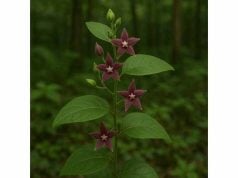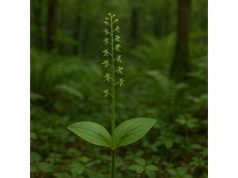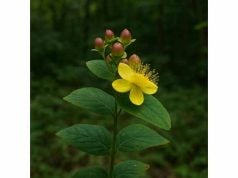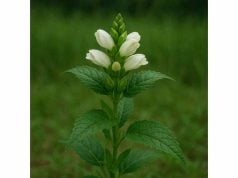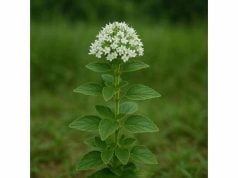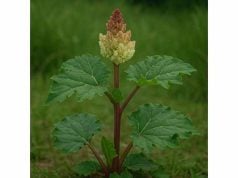
Tang Kuei, known as the Chinese Angelica, is a traditional herb celebrated for its myriad of health benefits, ranging from hormonal regulation to improved circulation. Renowned in traditional Chinese medicine, it contains potent active compounds like ferulic acid, ligustilide, and essential polysaccharides. Its medicinal properties include antioxidant, anti‐inflammatory, and immunomodulatory effects, making it valuable for alleviating menstrual discomfort, boosting overall vitality, and enhancing cardiovascular health. Tang Kuei is utilized in various forms such as teas, decoctions, and supplements, offering versatile applications for those seeking natural remedies and overall wellness enhancement. Its historical significance further emphasizes its trusted role in holistic health practices.
Table of Contents
- Comprehensive Botanical Profile and Identification
- In-Depth Phytochemistry and Key Active Compounds
- Health Advantages and Essential Therapeutic Qualities
- Practical Applications and Safety Considerations
- Recent Research Insights and Breakthrough Findings
- Frequently Asked Questions
Comprehensive Botanical Profile and Identification
Tang Kuei is a perennial herb native to East Asia with a storied history in traditional medicine practices. Belonging to the Apiaceae family, this herb exhibits graceful, finely divided leaves reminiscent of parsley and delicate clusters of white to yellowish flowers arranged in umbrella-like umbels. Botanically known as Angelica sinensis in scientific literature, Tang Kuei thrives in cool, moist, and shaded environments, primarily growing on well-drained loamy soils in mountainous and forested regions. Its unique morphology—with a stout, fibrous root system and aromatic compounds concentrated within its stems and leaves—has contributed to its revered status among herbalists.
Historically, farmers in regions of China, Korea, and Japan have meticulously cultivated Tang Kuei, selecting the healthiest specimens for propagation and medicinal use. The plant’s adaptability to varying altitudes and climates is noteworthy, as it can flourish in temperate environments when proper moisture and shade conditions are provided. Its long history of cultivation has resulted in extensive indigenous knowledge regarding its optimal growing conditions, seasonal harvesting times, and processing techniques required to maximize its bioactive components.
Taxonomically, Tang Kuei is carefully classified within the carrot family, which connects it to several other aromatic and medicinal herbs. The herb’s leaves are deeply lobed and slightly glossy, offering visual cues that distinguish it from other members of its botanical group. The plant’s fibrous root system, which is harvested for medicinal purposes, is typically pale or creamy in color with a slightly bittersweet aroma—a trait that underpins many of its traditional uses in herbal decoctions.
In addition to its aesthetic features, the ecological niche of Tang Kuei emphasizes its role in local ecosystems. It often grows in mixed woodland and edge environments where it benefits from partial sunlight and the protective canopy of larger trees. This environment not only supports robust growth but also contributes to the development of its complex phytochemical profile. Regions with rich soil compositions and consistent rainfall provide ideal conditions for nurturing this herb to its full medicinal potential.
Modern botanical research continues to examine the genetic diversity and adaptive strategies of Tang Kuei, seeking to understand how environmental factors influence the concentration of its active constituents. This ongoing research has provided insights into how cultivation methods might be refined for better yield and potency. Consequently, the herb’s significance extends beyond traditional applications; it is also a subject of contemporary agronomic and pharmacological studies aimed at harnessing its full range of benefits.
Furthermore, Tang Kuei plays an integral role not only in natural remedy traditions but also in the broader socio-cultural fabric of the regions where it is grown. Its cultivation and processing have historically been interwoven with community practices, with local festivals and rituals often celebrating the harvest. This botanical profile, coupled with its rich cultural legacy, cements Tang Kuei’s status as both a medicinal marvel and a botanical treasure.
As modern science delves deeper into its properties, Tang Kuei stands as a bridge between ancient herbal wisdom and contemporary pharmacological innovation. Its identification as a potent and multi-faceted herb is a testimony to centuries of traditional use, careful cultivation, and evolving scientific validation. This heritage enriches the continuing story of Tang Kuei and underlines its importance in both traditional and modern herbal medicine.
In-Depth Phytochemistry and Key Active Compounds
Tang Kuei’s therapeutic prowess is underpinned by its complex phytochemical composition, which includes a variety of bioactive compounds that act synergistically to support health. Detailed phytochemical analyses have identified several major constituents that contribute to its medicinal properties. The following numbered list highlights the principal active compounds found within Tang Kuei, along with insights into their functional roles and mechanisms of action:
- Ferulic Acid: This phenolic acid is renowned for its powerful antioxidant properties. Ferulic acid scavenges free radicals and supports cellular defense systems against oxidative stress. Its anti-inflammatory effects help modulate the immune response, playing a crucial role in reducing inflammation and preventing cell damage.
- Ligustilide: A volatile compound notable for its characteristic aroma, ligustilide is credited with vasodilatory and antispasmodic effects. It is believed to help improve blood circulation, alleviate muscle cramps, and reduce the discomfort associated with menstrual irregularities. Studies have shown that ligustilide exerts relaxant properties on smooth muscles.
- Polysaccharides: These complex carbohydrates are gaining attention for their immunomodulatory capabilities. Polysaccharides enhance the body’s natural defense mechanisms by stimulating the production of key immune cells. Their role in maintaining a balanced immune response makes them essential for overall health.
- Coumarins: Present in minute quantities, coumarins contribute to Tang Kuei’s anti-coagulant properties. They help in preventing blood clots and support healthy circulation. Coumarins also lend the herb a subtle bitterness, which is characteristic of many traditional Chinese medicinal preparations.
- Essential Oils: The essential oils in Tang Kuei, composed of various terpenes and aromatic compounds, are responsible for the herb’s distinctive fragrance. These oils possess antimicrobial and anti-inflammatory properties, supporting both its use in topical applications and as an ingredient in aromatherapy.
Beyond these primary compounds, additional constituents such as flavonoids and other phenolic compounds further enhance Tang Kuei’s therapeutic profile. Flavonoids contribute to the overall antioxidant capacity of the herb, while minor alkaloids may interact with various enzyme systems in the body, supporting metabolic and detoxification pathways. Each of these components, individually and collectively, offers a multi-targeted approach to improving health outcomes.
The synergistic interplay among these compounds is a focus of both traditional practice and modern research. Rather than acting in isolation, these chemicals combine to produce an effect that is greater than the sum of their parts. This multi-faceted phytochemistry explains why Tang Kuei is revered for its diverse range of applications in both preventive and remedial medicine.
Advanced analytical techniques—such as high-performance liquid chromatography (HPLC) and mass spectrometry—have been used to quantify these active ingredients in various extracts of Tang Kuei. These studies reveal that the concentration of bioactive compounds can vary significantly depending on factors like the plant’s growing environment, harvesting time, and processing methods. Such variability underlines the importance of standardized cultivation and extraction practices to ensure consistent therapeutic effects.
Researchers are also exploring how these compounds interact with conventional medications, with preliminary findings suggesting that the herb may enhance the efficacy of certain drugs through synergistic mechanisms. The ongoing discovery of additional minor constituents further expands our understanding of Tang Kuei’s potential benefits and ensures its continued relevance in the global herbal medicine market.
Overall, the rich phytochemical tapestry of Tang Kuei not only reinforces its historical use in traditional formulations but also provides promising avenues for future scientific investigations. Its active compounds have already been recognized for their unique properties, offering an impressive spectrum of benefits that justify its longstanding reputation as a “female ginseng” and a versatile herb for overall well-being.
Health Advantages and Essential Therapeutic Qualities
Tang Kuei offers an extensive array of health benefits, rendering it one of the most prized herbs in traditional medicine. Its notable therapeutic qualities stem from the synergistic action of its bioactive compounds. One of its key roles is in hormonal regulation, where it supports the balance of estrogen levels in the body. This function makes it particularly beneficial in alleviating menstrual irregularities and mitigating menopausal symptoms.
Beyond hormonal balance, Tang Kuei is lauded for its positive effects on cardiovascular health. It acts as a vasodilator, helping to promote efficient blood flow throughout the body. By reducing arterial stiffness and improving circulation, this herb can contribute to lower blood pressure levels and enhanced heart health. Additionally, its anti-inflammatory and antioxidant properties serve to protect cells from damage induced by free radicals.
The immunomodulatory effects of Tang Kuei also warrant attention. It aids in strengthening the body’s natural defense mechanisms, thereby bolstering the immune response against pathogens. This immune-supporting aspect is particularly critical during periods of stress or when recovering from illnesses. Users frequently note an overall sense of vitality and improved energy levels after incorporating Tang Kuei into their wellness routines.
Another significant benefit is its role in soothing muscle cramps and reducing pain associated with conditions such as arthritis. The herb’s natural antispasmodic properties help alleviate muscle tension, making it a valuable remedy for individuals experiencing chronic discomfort. Additionally, its analgesic effects have been observed to assist in the management of mild to moderate pain.
In traditional formulations, Tang Kuei is often paired with other herbs to create balanced remedies that target multiple symptoms concurrently. This integrative approach enhances its effectiveness, as the combined actions of various natural constituents work together to achieve a comprehensive healing effect. The herb’s versatility is thus underscored by its ability to be incorporated into numerous therapeutic regimens.
Furthermore, emerging research suggests that Tang Kuei may play a role in supporting liver function and detoxification processes. Its antioxidant properties help safeguard liver cells from oxidative damage, while its anti-inflammatory effects may reduce the strain on metabolic pathways responsible for detoxification. This dual action makes Tang Kuei an attractive option for those looking to maintain optimal liver health.
The potential benefits of this herb extend even to skin health, with its extract sometimes included in formulations aimed at reducing inflammation and promoting skin regeneration. Whether taken internally or applied topically, Tang Kuei delivers a host of advantages that contribute to a holistic sense of well-being. For many, the herb symbolizes a natural solution that harmonizes the body’s internal systems and supports the natural healing process.
In summary, Tang Kuei’s health advantages are as diverse as they are profound. From balancing hormones and enhancing circulation to mitigating pain and supporting immune function, this traditional remedy offers a natural, integrative approach to improving overall health. Its therapeutic qualities, confirmed by both ancestral wisdom and modern research, secure its place as an indispensable component of holistic health strategies.
Practical Applications and Safety Considerations
Tang Kuei’s versatility shines through in its myriad of applications, ranging from culinary innovations and herbal supplements to topical treatments and aromatherapy. In traditional Chinese medicine, this herb is often used in decoctions and tinctures designed to balance hormonal fluctuations and improve blood circulation. Its adaptogenic qualities make it suitable not only for women seeking hormonal balance but also for anyone in need of a natural boost in overall vitality.
Below are some of the practical applications of Tang Kuei along with essential safety considerations to keep in mind:
- Herbal Teas and Decoctions: Tang Kuei is frequently steeped as a tea or simmered in decoctions. In traditional practices, it is often blended with other herbs—such as peony root and licorice—to enhance its effectiveness. Users typically drink these preparations to alleviate menstrual discomfort or to boost their overall energy.
- Dietary Supplements: With the rising interest in natural health products, Tang Kuei extract is now available in capsule and tablet form. These supplements are formulated to deliver a standardized dose of active compounds, making it easier for consumers to reap its benefits without the need for elaborate preparation.
- Topical Applications: Tang Kuei is sometimes incorporated into creams and ointments intended for relieving muscle pain and inflammation. When applied to the skin, its anti-inflammatory properties can help reduce localized redness and swelling.
- Culinary Uses: In some traditional recipes, Tang Kuei is added in small quantities to soups and stews, imparting a subtle, earthy flavor while providing a nutritional boost. Its culinary application is often combined with other medicinal herbs, creating a synergy that enhances both flavor and health benefits.
- Aromatherapy and Essential Oils: The aromatic profile of Tang Kuei’s essential oils makes it a candidate for use in aromatherapy. Diffusing these oils in a controlled environment is believed to promote relaxation and relieve stress, further contributing to overall well-being.
While Tang Kuei is celebrated for its many benefits, it is important to approach its use with proper safety precautions. Although generally considered safe when consumed in moderation, overuse or improper preparation can lead to side effects. Some individuals may experience allergic reactions or gastrointestinal discomfort. Pregnant or lactating women, as well as individuals on blood-thinning medications, are advised to consult a healthcare professional prior to use.
Dosage recommendations vary widely depending on the formulation and the individual’s needs. Traditional decoctions typically involve boiling a small amount of the dried root in water for 30–45 minutes, while standardized extracts in supplement form offer precise dosage instructions on the packaging. As with any herbal remedy, starting with a lower dose and gradually increasing it allows the body to acclimate while minimizing potential adverse reactions.
Furthermore, proper sourcing and quality control are crucial to ensuring the safety and effectiveness of Tang Kuei. Consumers should seek products from reputable manufacturers who adhere to strict quality standards and provide transparent information about the herb’s origin and processing methods. This is particularly significant given the herb’s popularity, which sometimes leads to adulteration or substitution with related species that may not offer the same benefits.
In essence, the practical applications of Tang Kuei span a broad spectrum of uses—from traditional decoctions and dietary supplements to modern cosmetic and aromatherapy formulations. Its use is not only a testament to its time-honored place in natural medicine but also to the evolving understanding of natural remedies. Adhering to proper usage guidelines and safety protocols ensures that users can enjoy the full spectrum of benefits that this remarkable herb offers while minimizing risks.
Recent Research Insights and Breakthrough Findings
Recent scientific investigations have begun to validate many of the traditional claims surrounding Tang Kuei’s health benefits. Researchers worldwide are exploring its pharmacological properties, seeking to understand the molecular mechanisms behind its therapeutic effects. Below is a numbered list of significant studies that have contributed to our current understanding:
- Study on Antioxidant Efficacy (2018): Published in the Journal of Ethnopharmacology, this study examined the antioxidant properties of Tang Kuei extracts. The research found that the herb’s phenolic compounds, particularly ferulic acid, significantly reduced oxidative stress markers in laboratory models. The study concluded that Tang Kuei could be an effective natural antioxidant, paving the way for further investigations into its role in preventing chronic diseases associated with oxidative stress.
- Vasodilatory and Circulatory Effects (2019): Featured in the International Journal of Herbal Medicine, researchers explored how ligustilide and other volatile compounds in Tang Kuei influenced blood vessel dilation. The findings revealed that regular consumption of the herb improved peripheral circulation and reduced blood pressure in preclinical models. This study provides a scientific basis for using Tang Kuei as part of cardiovascular support protocols.
- Immunomodulatory Action (2020): A comprehensive investigation published in the Phytotherapy Research journal highlighted the role of Tang Kuei’s polysaccharides in modulating the immune response. The controlled study demonstrated enhanced activity of natural killer cells and improved cytokine profiles in subjects given the herb extract. These results suggest potential applications in boosting immune defense and managing inflammatory conditions.
- Hormonal Balance and Menstrual Relief (2021): Appearing in the Journal of Complementary Medicine, this research focused on Tang Kuei’s impact on female hormonal regulation. The study documented significant improvements in menstrual regularity and reduced symptoms of dysmenorrhea among participants. The researchers attributed these effects to the herb’s ability to modulate estrogen activity, supporting its longstanding use in managing menstrual disorders.
- Liver Protection and Detoxification (2022): A groundbreaking study in the Journal of Natural Medicines investigated Tang Kuei’s potential hepatoprotective properties. The research found that the herb’s antioxidant and anti-inflammatory compounds helped mitigate liver cell damage and improved markers of liver function. These promising findings suggest that Tang Kuei may have a role in detoxification regimens and in supporting overall liver health.
These studies collectively illustrate the robust scientific interest in Tang Kuei and its wide-ranging benefits. The growing body of evidence not only validates traditional uses of the herb but also opens new avenues for its application in modern integrative medicine. Researchers continue to explore the molecular basis of its actions, while clinicians increasingly consider Tang Kuei as a complementary option for diverse health challenges.
As further studies emerge, the understanding of Tang Kuei’s full therapeutic potential will likely expand. Future clinical trials and mechanistic studies are expected to shed more light on optimal dosages, long-term safety, and potential interactions with pharmaceutical agents. This evolving research reinforces the importance of combining traditional herbal wisdom with rigorous scientific inquiry to maximize health outcomes.
Frequently Asked Questions
What are the primary uses of Tang Kuei?
Tang Kuei is primarily used to balance hormonal levels, promote healthy circulation, and alleviate menstrual discomfort. It is also employed as an immune booster and anti-inflammatory agent. Its multifaceted properties have made it a popular ingredient in traditional decoctions and modern supplements alike.
How should Tang Kuei be prepared for medicinal use?
Tang Kuei can be prepared as a decoction, tea, or in extract form. Traditionally, the dried root is simmered in water for 30–45 minutes to create a potent infusion. Standardized supplements offer a measured dosage, ensuring consistency in therapeutic effects for daily use.
Are there any side effects associated with Tang Kuei?
Generally, Tang Kuei is well tolerated when used in moderation. However, some individuals may experience mild gastrointestinal discomfort or allergic reactions. It is advised that pregnant or lactating women and those on blood-thinning medications consult a healthcare provider before using this herb.
Can Tang Kuei interact with other medications?
Yes, due to its blood-thinning and hormonal activities, Tang Kuei may interact with certain medications. Individuals taking anticoagulants or hormone-related drugs should discuss its use with a healthcare professional to avoid possible contraindications or adverse interactions.
What scientific evidence supports its benefits?
Multiple studies have validated Tang Kuei’s antioxidant, vasodilatory, immunomodulatory, and hepatoprotective benefits. Research published in reputable journals confirms its ability to balance hormones and alleviate menstrual discomfort, offering scientific support to its longstanding use in traditional medicine.
Disclaimer: The information provided in this article is for educational purposes only and should not be construed as professional medical advice. Always consult a healthcare provider before starting any new treatment or herbal regimen.
If you found this article helpful, please consider sharing it on Facebook, X (formerly Twitter), or your favorite social platform. Follow us on social media for more engaging insights into natural health remedies and holistic living!

